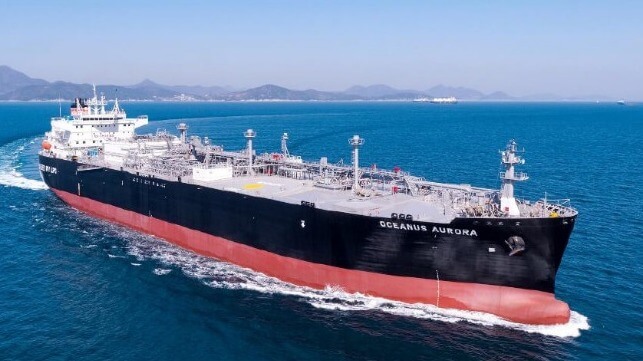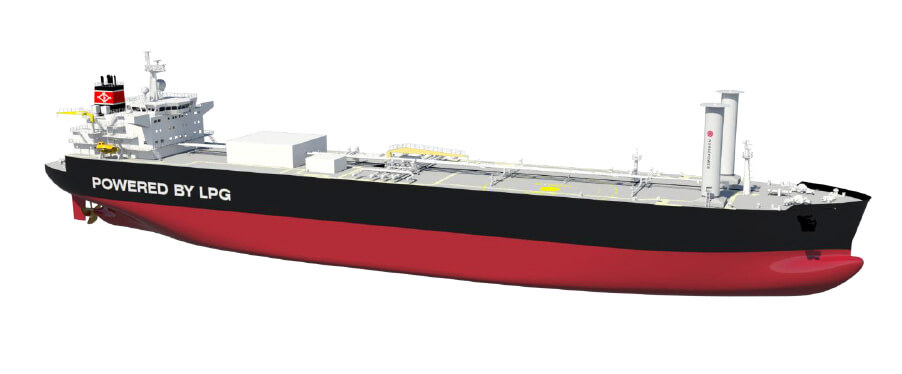New Rotor Installation on VLGC as Norsepower Plans to Scale Production

Norsepower, one of the companies developing supplemental wind-power propulsion, received a new order for a tailored installation of its wind rotors for a newbuild very large gas carrier. The order comes as Norsepower looks to step up its production after completing a new round of financing.
The new vessel, the Oceanus Aurora, was delivered today from Daewoo Shipbuilding & Marine Engineering Co. in Korea to Japan’s IINO Kaiun Kaisha as the company’s second vessel equipped with a dual-fuel LPG main engine. The shipping company reports that it is part of its efforts to address the sustainability of its operations. Further future-proofing the design, the vessel is the company’s first VLGC that can also load ammonia as a cargo.
IINO elected to incorporate several features into the design including two wind rotors from Norsepower. The rotors were specially designed for the vessel to accommodate its specific air draught limits. The shipyard fitted the foundations for the rotors during the construction process. Each rotor will stand approximately 65 feet (20 meters) off the deck and have a diameter of approximately 13 feet (4 meters). The two rotors which will be positioned side by side at the front of the vessel will be installed during the second quarter of 2024 while the vessel is in service. Norsepower estimates the rotor sails will reduce the vessel’s fuel consumption and CO? emissions by approximately four percent.

Rendering of the vessel after the rotors are fitted in the second quarter of 2024 (Norsepower)
“IINO Lines is committed to taking an innovative approach to meeting and exceeding local and international decarbonization targets. Investing in sustainable vessels is central to our approach and working with Norsepower will enable us to use innovative, and proven technologies which fit in seamlessly with our operations,” commented Hiromi Tosha, President of IINO Lines.
The 62,000 dwt vessel’s main engine is dual-fuel operating either on conventional fuel oil or LPG. Among the other elements incorporated into the design is a shaft generator providing power instead of a diesel-fueled generator. Registered in Liberia, the vessel is 754 feet long with a cargo tank capacity of 91,000 cbm. It departed Korea heading for Singapore after the handover was completed at the shipyard.
Norsepower highlights that there are currently as many as 30,000 vessels in service that could benefit from the rotor sail. The company reports it currently has 15 rotor sails operating on vessels with more than eight years of operational data on its designs which are a modernized version of the Flettner rotor first introduced a century ago. Norsepower says its data shows a fuel consumption reduction of between 5 and 25 percent or more in certain conditions. The Oceanus Aurora is the company’s third gas carrier installation contract.
Earlier this week, Norsepower announced it had secured €28 million in its latest round of funding. French asset manager Mirova, an affiliate of Natixis Investment Management, led the fundraising through its impact private equity Mirova Environment Acceleration Capital fund. Additional participants included The Finnish Climate Fund (Ilmastorahasto), OGCI Climate Investments, Nefco – The Nordic Green Bank, Tesi, and Power Fund III.
The company said the new funding will help accelerate its scale of production and help to meet increasing global demand. They plan to use the funding to also strengthen Norsepower’s product research & development, marketing, recruitment, and intellectual property portfolio.
